Heavy rains brought on by Typhoon Nangka occurred intermittently across Southeast Asia from the 13th to the 16th of October, affecting Vietnam, Cambodia and Laos. Flooding occurred across several states and more than 200,000 people have been affected in Cambodia alone with 48,000 homes damaged and 25 deaths as of writing.
Japan Heart Cambodia dispatched an emergency medical support team to the flood-affected Svay Dong Kev district in Pursat from the 24th to the 27th of October.
Pursat is located about 5 hours northwest of Japan Heart Children’s Medical Center by car. Here, 60 to 70% of the land has been flooded and three people have perished.
At the time of our preliminary survey, most of the water had been drained and we considered whether our assistance would be needed. However, health officials in the area insisted that there were many people in dire need of medical help and so we dispatched a team of 8 people.
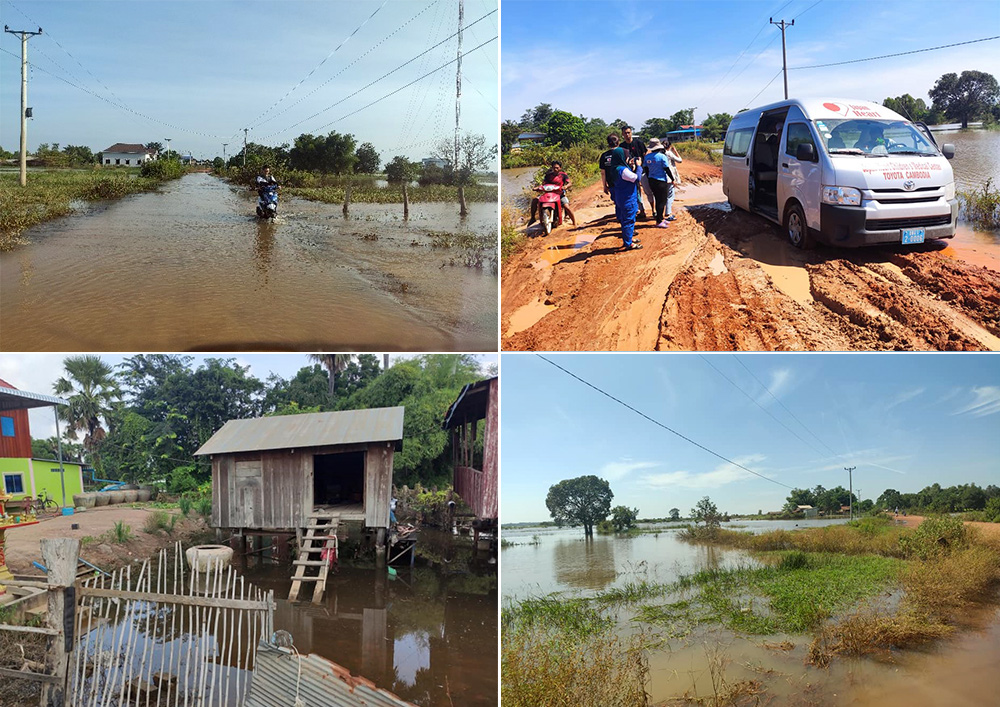
Following the local health director’s motorcycle, we entered a small road leading to the activity site and almost immediately saw submerged houses.
Even in places that were not underwater, the road was full of mud and cars frequently got stuck. With the help of local people, we headed to the activity site with the use of boats and tractors.
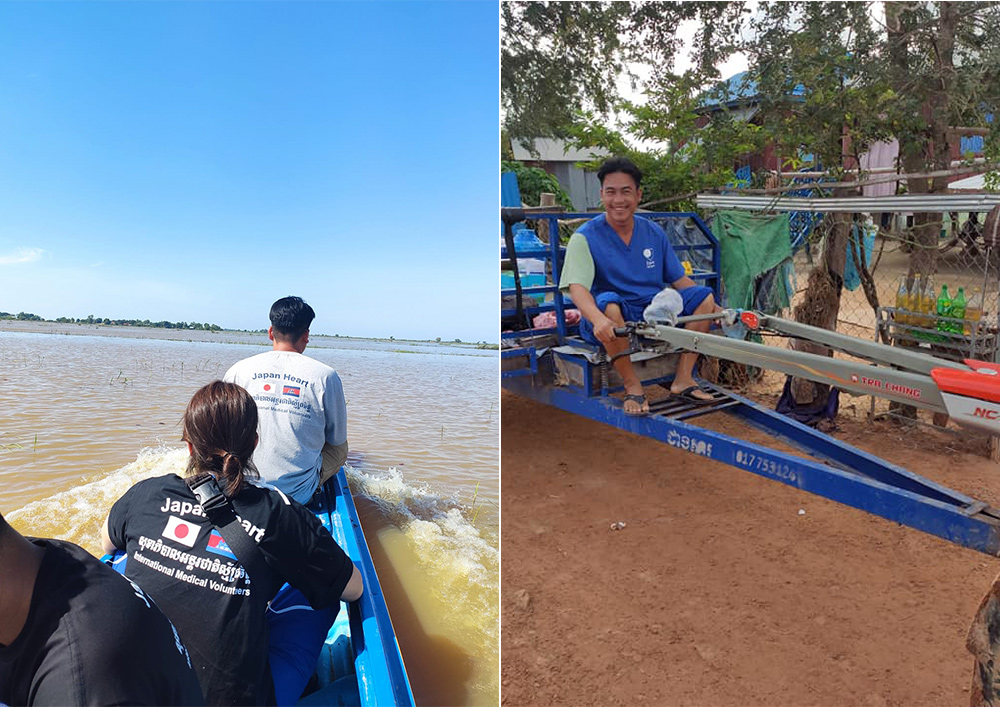
[photos: We travelled over flooded rice fields in boats, as a necessity]
Upon arrival at the activity site our doctor, nurse, pharmacist and administration staff team prepared all the necessary equipment for starting medical examinations and treatment. Word spread quickly and even in this area without many people many patients gathered.
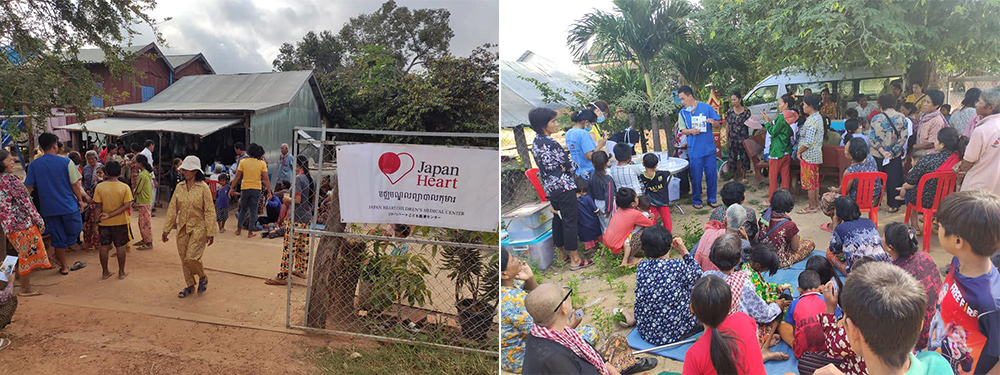
Most patients complained of illnesses such as diarrhoea, constipation, colds, abdominal pain, nausea and other symptoms that could be affected by the flooding. It was found that there were also cases of psychological affects such as insomnia.
Additionally, since foreign NGOs had never been to this area there were many patients who visited the clinic for non-flood related chronic illnesses. The most common diagnoses were for hypertension or diabetes.
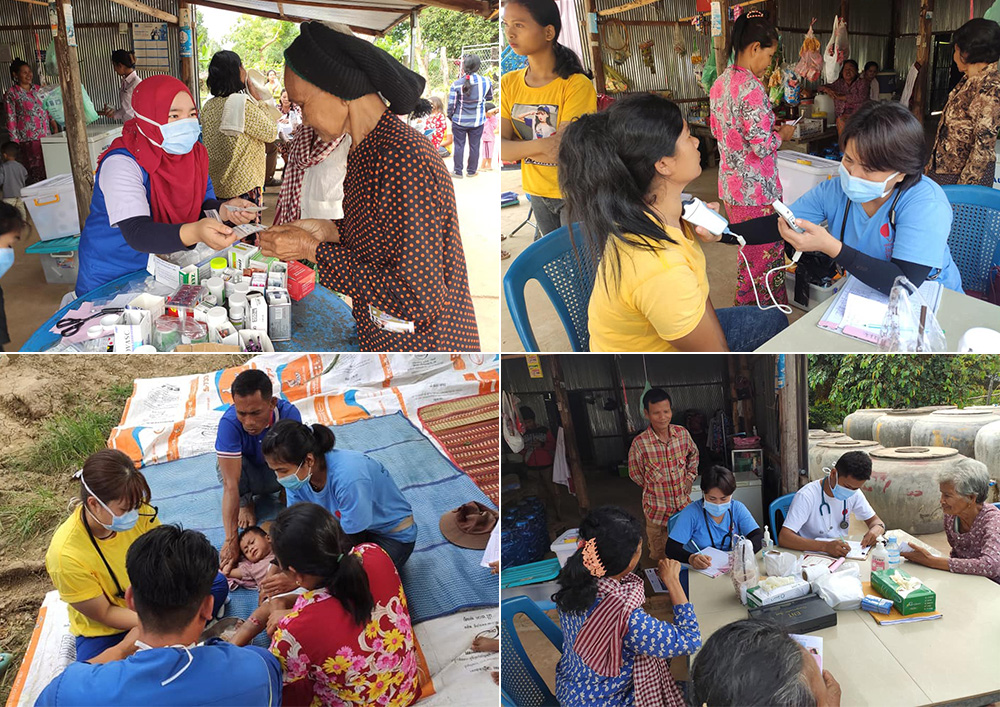
We also helped with road repair using sandbags in places that were difficult for cars to travel.
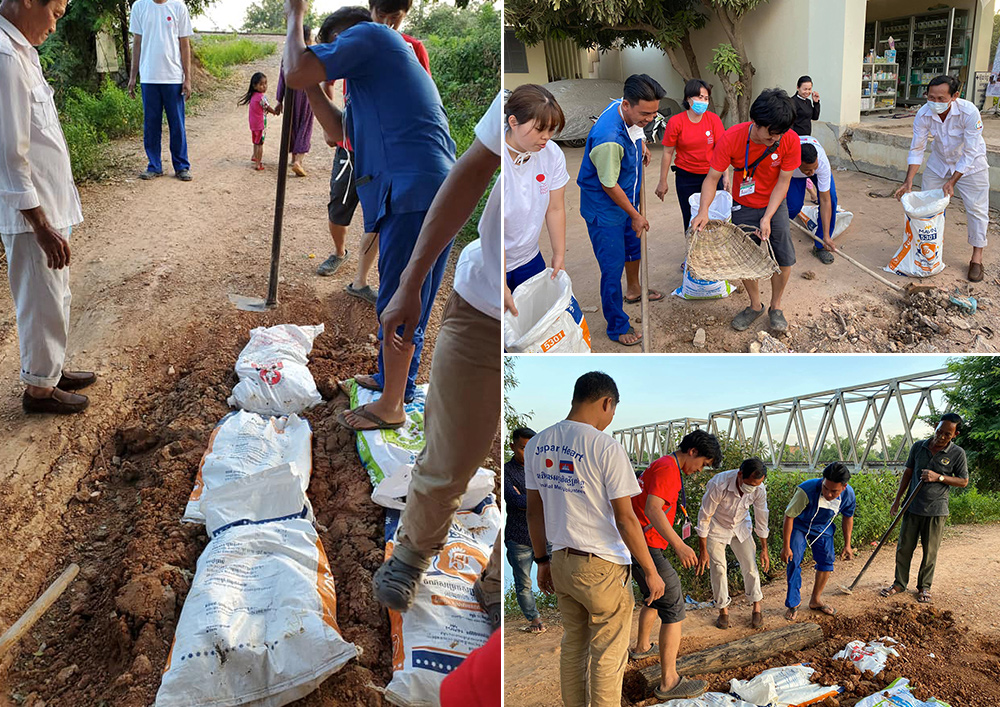
Over 4 days we visited 6 activity sites including an elementary school, a shop front and a temple and 488 people were examined.
Patients that had been treated shared some stories about the floods. One patient talked about the flooding being up to their knees even inside their home and being scared that the water wouldn’t recede as normal. Another patient described their crops being washed away by the flooding and the submerged rice being ruined even though it was close to harvest.
Also, patients with chronic illnesses were unable to go to the hospital due to infrastructure being destroyed by the floods. Patients who couldn’t take their required medicines said that they wanted to be treated no matter how long they had to wait.
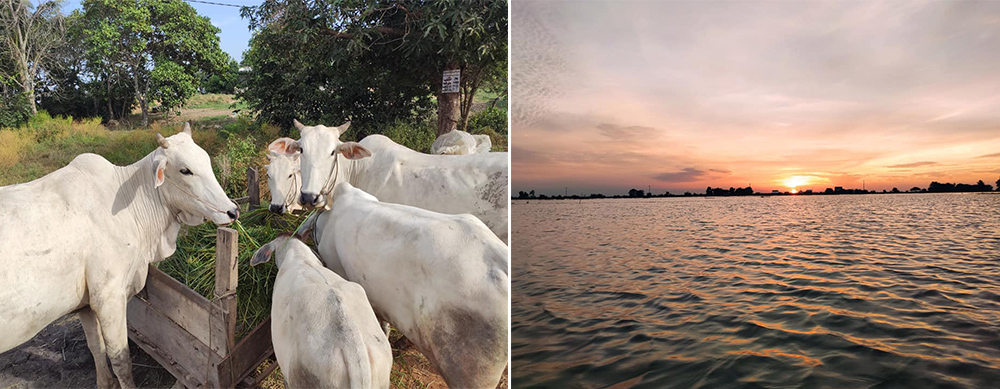
This is the first time that we have dispatched disaster relief in Cambodia, but the Cambodian staff who participated have a solid understanding of their roles and treated many people every day. Even when their lunch time was delayed or they couldn’t return to their accomodation before 9pm they never complained. On the contrary they said that they were happy to participate and expressed that they would take the opportunity to join such activities in the future.
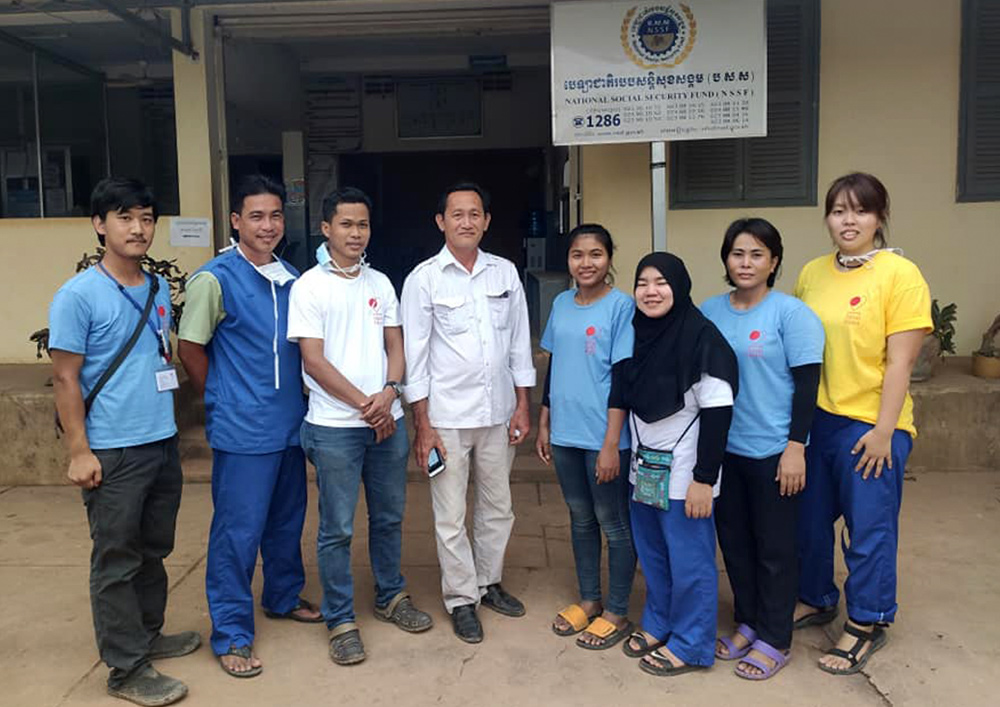
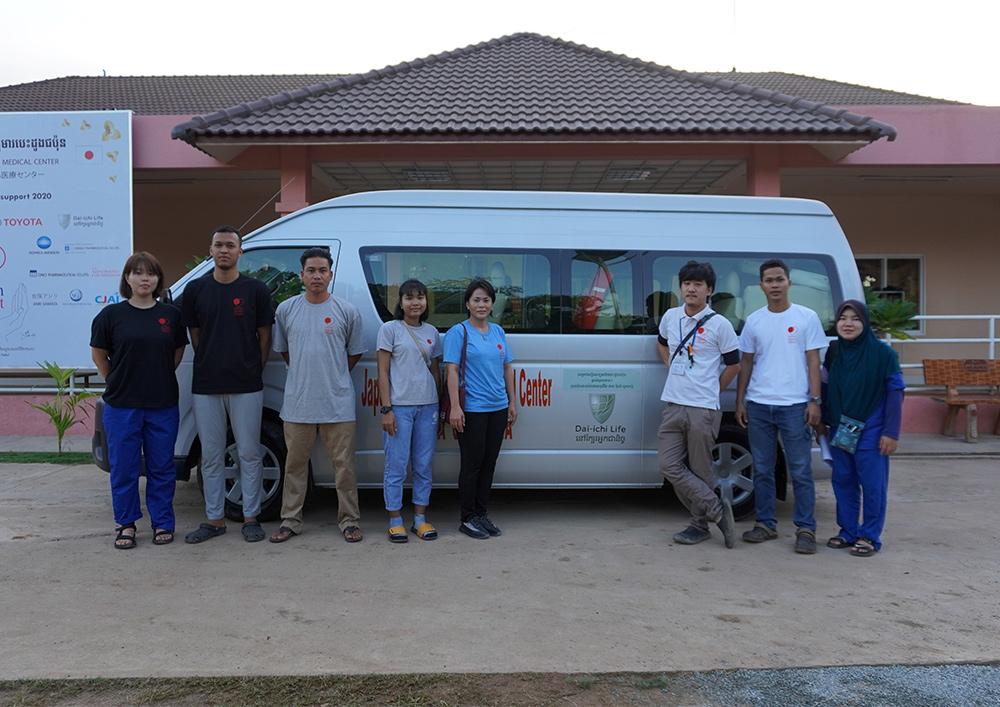
Japan Heart Children’s Medical Center General Manager Yamashita

